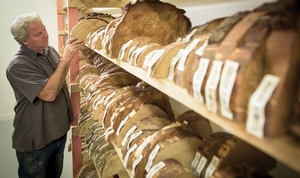Boosting forestry productivity and economics
 Growing Confidence in Forestry’s Future (GCFF) is a joint research programme between industry, Scion and MBIE that aims to boost the productivity and economics of forestry, and provide a stable supply of quality timber for wood processors. It also focuses on ensuring that future intensification is environmentally and socially acceptable.
Growing Confidence in Forestry’s Future (GCFF) is a joint research programme between industry, Scion and MBIE that aims to boost the productivity and economics of forestry, and provide a stable supply of quality timber for wood processors. It also focuses on ensuring that future intensification is environmentally and socially acceptable.Our GCFF research team has already made a number of important achievements since the programme commenced in October 2013.
By more fully utilising site potential, scientists have calculated that productivity can be increased by 5-8 m3 ha-1 yr-1. In today’s log market, this would yield a further $13,000 per hectare (gross) over a 30-year rotation. Scientists are using process-based models to estimate the level of productivity that is possible, which has highlighted the impact of soil water holding capacity.
“To complement this modelling work, we are establishing the first of our accelerator trials this winter to provide data on the levels of productivity that are possible,” says Science Leader Dr Peter Clinton. “These trials contain different genotypes and site modification treatments aimed at improving productivity.
“We will also use these trials to study the effects of increased productivity on wood formation. As part of this work, our scientists have developed a new micro-coring technique that makes it possible to obtain data on wood properties from an earlier stage than is currently possible.”
The GCFF programme is building on the legacy of trials that were established more than 25 years ago to study the effects of stand density and seedlot on growth and wood properties. Results from these trials are guiding forest managers in developing silvicultural regimes for the next rotation. Data from two of the Long-Term Site Productivity trials have provided new insights into the productivity and sustainability of planted forests over multiple rotations. These data are being fed into the nutrient balance model (NuBalM) to enable forest managers to take a more targeted approach to forest nutrition.
“The programme has helped us gain a better understanding about the role of soil micro-organisms on productivity,” says Peter. “The development of new assays for profiling microbial communities in soils enables us to analyse the use of nutrients on seedling performance. We are currently planting new trials to examine the effects of different treatments on microbial communities and ultimately, tree growth and health.
“We’ve also made huge advances in using both terrestrial and airborne LiDAR, as well as multispectral satellite imagery, to obtain productivity metrics and information on tree characteristics. At the same time, we’re exploring unmanned aerial vehicles as possible platforms for these remote sensing technologies.”
Further advancements have also been made to the Forest Investment Finder spatial economic model to include different forest ecosystem services and timber values to support decisions around integrated land management. This work has contributed to discussions at the national and regional levels around land-use policy.
Working with industry to achieve our goals
The GCFF programme relies on a strong level of engagement between scientists and industry. Four innovation clusters have been formed as a means of creating greater impact from our science and to provide a forum for discussion. Our scientists regularly meet with an industry technical committee to ensure that the work is achieving the desired impact.As a result, forest growers now place a greater focus on productivity as a management goal and recognise the importance of site occupancy as a driver of productivity. Most companies refer to stand density index when evaluating silvicultural regimes, and have a far greater understanding of how these regimes, site and genetics affect wood quality.
LiDAR and other remote sensing technologies are increasingly becoming part of mainstream forest management with forest managers seeing new uses for these technologies.
Furthermore, there is a greater evidence base that can be used in debates on environmental issues, such as land-use, water quality and biodiversity protection. Research has increased awareness by forest owners and government policy makers of the value of forest ecosystem services, such as flood and erosion protection, and recreation.
